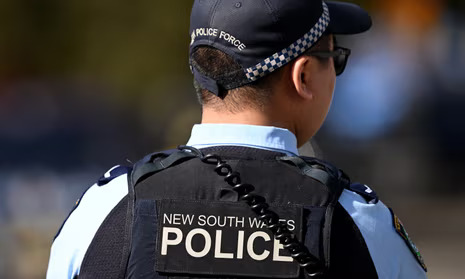The alleged murder of Jesse Baird and Luke Davies by Constable Beau Lamarre-Condon over three weeks ago has become an obsession in the Australian media. The Sydney Morning Herald alone has run over a hundred stories digging into every possible detail in a way reminiscent of how the media covered the disappearance of William Tyrrell.
The oversaturated coverage of this situation contrasts with the absence of media attention and ongoing public silence regarding the many other deaths caused by police officers. There were over 110 deaths in police custody last year. 31 of the victims were Indigenous. While most in Sydney could name Jesse or Luke, almost no one could even name one of those victims.
Discussing the murders in the context of policing towards the queer community is important, especially when the police continue to march in Mardi Gras despite opposition from queer groups. How police commissioner Karen Webb handled criticism, quoting Taylor Swift’s “Shake it Off”, was dismissive and arrogant. However, perhaps the more important story is how an off-duty officer could use his service weapon in a crime.
The NSW police force carries the highest-powered handgun available in the country, the Glock semi-automatic. Shockingly, the law allows police officers to carry their service weapons while off duty. The only restrictions are guidelines written by the Police Commissioner which are not open to the public.
The lack of transparency surrounding firearms has caused issues before. An audit in 2007 commissioned by then Deputy Commissioner Terry Collins found that between 1996 and 2007, 14 police Glocks had been stolen, seven of which were stolen from police cars. Only five of the 14 were recovered, meaning nine dangerous weapons entered the community because the police did not do their jobs. Disturbingly, there has not been another audit since, even though the underlying policies have not changed. It’s reasonable to assume more guns have been lost or taken.
When you look at the alleged murders of Baird and Davies in the context of what they were, victims of domestic violence, the poor regulation of service weapons warrants even more scrutiny.
A 2023 Law Enforcement Conduct Commission (LECC) report into police responses to family and domestic violence found that when a police officer has been subject to an Apprehended Violence Order (AVO), a form of restraining order, there has been almost no record of action to make sure they no longer have access to their service weapons.
The law theoretically requires any allegation of domestic violence to be followed up with a suspension of that officer’s firearms license and the securing of their weapons. However, in practice, of the 39 AVO cases investigated, 36 included no information as to whether the weapons were secured. Some of those reports mention victims being afraid of the officers and report direct instances of verbal or physical aggression. The recent alleged murders are no longer surprising when community safety from the police is disregarded like this.
In response to the LECC report, the NSW police admitted that “there is no formal process for how local Commands record securing the service firearms of involved officers.” They claimed it was up to “Individual Commanders” to decide about protocols. The LECC recommended the police keep records of when a risk assessment is completed and a record of who completes it, but NSW police rejected both ideas.
Australia has the means to crack down on the misuse of firearms. After the 1996 Port Arthur massacre, Parliament passed the National Firearms Agreement which brought back over 650,000 guns from the public and created a national firearm registry to track legally owned guns. Before any Australian can even own a handgun, a 28-day waiting time and complex background checks have to be passed. If the police are given a monopoly on violence to enforce stringent gun regulations on citizens, the least they could do is hold themselves to a similar standard.
Greens MP Sue Higginson asked Commissioner Webb in a parliamentary hearing if the alleged murders would spark a review into how the police monitor service weapons. Webb claimed there would be an internal review but as of writing, there is no indication there will be any independent inquiry.
The shameful response is unsurprising. The media coverage has bought into the myth that Lamarre-Condon is a bad apple in a largely good system. We still live in a country where the police are given the benefit of the doubt despite decades of violence and brutalization of queer and First Nations communities.





